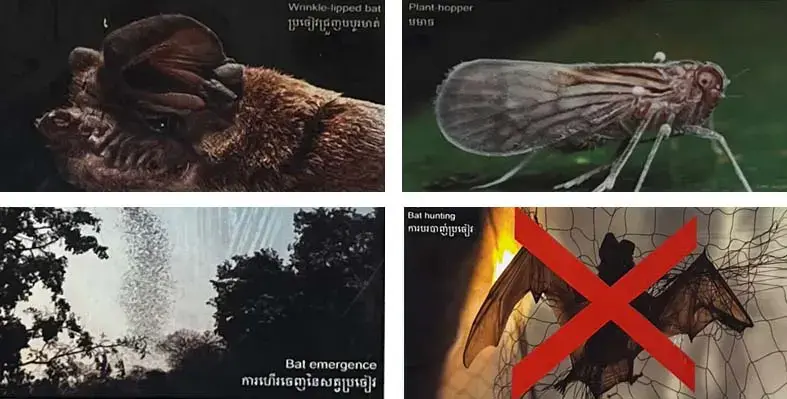The Asian wrinkle-lipped bat also known as Chaerephon plicatus resides in colonies within the caves of Phnom Sampeau and constitutes an important agricultural asset to Cambodia
The cave located close to the infamous Killing Cave, is one of three at Phnom Sampeau that house colonies of more than one million Asian wrinkle-lipped bats. Only 13 colonies of the species are known in Cambodia, with the colonies at Sampeu being among the largest in the country.
Wrinkle-lipped bats fly up to 50 km from their roosts each night to hunt insects, some of which include serious agricultural pests like plant-hoppers that can destroy up to 60% of the rice harvest. With each bat eating 50-100% of its own weight every night, the large colonies in Cambodia likely prevent the loss of over 2,000 tonnes of rice each year. This equals enough rice to feed over 21,000 Cambodians annually.
Besides being an important asset to Cambodia’s agriculture sector, large colonies of wrinkle-lipped bats are increasingly rare in Southeast Asia, which is why hunting or harming these bats is illegal under Cambodian law.
The main reasons for the decline of this species include the destruction of their habitat through hunting and mining of the limestone hills where they live. Moreover, with Phnom Sampeau being a popular tourist spot, hundreds of tourists and locals gather at the foot of the bat caves every evening to observe the millions of these bats exiting the caves to hunt. Owing to the major ecological services that they provide, visitors are therefore advised to not make loud noises, use flash photography or throw objects at the bats.





